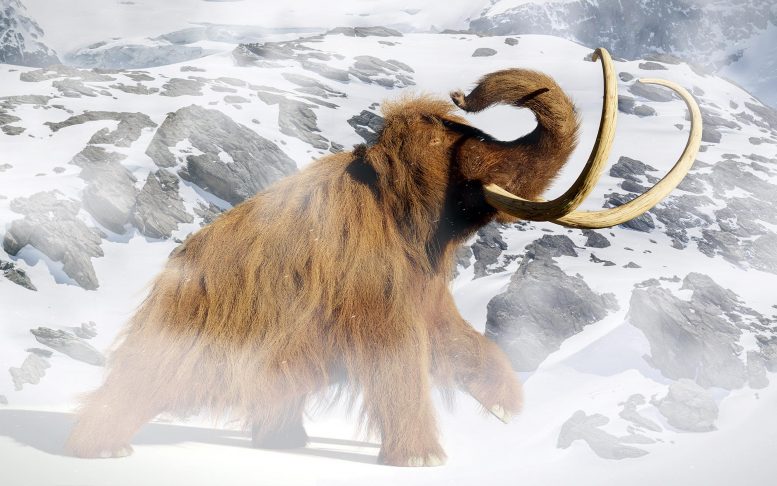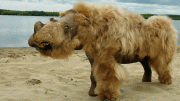
Woolly Mammoth rendering. Wrangel Island mammoths had genetic defects that could have been fatal to the species due to their small population size.
A new study in Genome Biology and Evolution, published by Oxford University Press, resurrected the mutated genes of the last herd of woolly mammoths and found that their small population had developed a number of genetic defects that may have proved fatal for the species.
Woolly mammoths were one of the most abundant, cold-adapted species on earth before the conclusion of the Pleistocene (~11,700 years ago). The end of this period was marked by dramatic climate fluctuations that eventually gave way to Holocene — which saw the near complete loss of cold and dry steppe tundra, (also known as the Mammoth steppe). This change caused the extinction of many species, including cave bears, cave hyenas, the woolly rhinoceros, and the continental population of woolly mammoths.
An isolated population of mammoths disappeared later on St. Paul Island due to rising sea levels and a lack of freshwater, which left only a small population of woolly mammoths (~ 300-500) on Wrangel Island, a remote Arctic refuge off the coast of Siberia. This final herd of mammoths died out some 5,000 years ago, though the cause of their extinction has long been a mystery.
Researchers here built upon the prior scientific studies that identified potentially harmful genetic mutations on the Wrangel Island mammoths. Comparing the DNA of a Wrangel Island mammoth to that of 3 Asian elephants and 2 more ancient mammoths, the study found a number of unique genetic mutations. The genes that showed these mutations related to a range of important functions, including neurological development, male fertility, insulin signaling, and sense of smell.
The final cause of the extinction of the Wrangel Island mammoths is still a mystery, but it is clear that, due to a decline in their population, they suffered from a medley of genetic defects that may have hindered their development.
“We know how the genes responsible for our ability to detect scents work,” says Vincent J. Lynch, an assistant professor of biological sciences at the University at Buffalo. “So we can resurrect the mammoth’s version, make cells I culture produce the mammoth gene, and then test whether the protein functions normally in cells. If it doesn’t — and it didn’t — we can infer that it probably means that Wrangel Island mammoths were unable to smell the flowers that they ate.”
Reference: “Functional architecture of deleterious genetic variants in the genome of a Wrangel Island mammoth” by Erin Fry, Sun K Kim, Sravanthi Chigurapti, Katelyn M Mika, Aakrosh Ratan, Alexander Dammermann, Brian J Mitchell, Webb Miller and Vincent J Lynch, 7 February 2020, Genome Biology and Evolution.
DOI: 10.1093/gbe/evz279








This amount of information is not convincing regarding the sense of smell. It is too easy to make really important conclusions with data that is hard for others to check for veracity. So much of an elephant’s and surely mammoth nerves are dedicated to the trunk and its complete operation that there was surely a whole suite of nerves dedicated to the sense of smell. Other senses, e.g. touch, taste, eye sight, learning from others and etc., besides the sense of smell guided food selection. The deadly pinch period of food availability and selection was in the winter when flowers are not available. Mammoths needed huge amounts of food year around and in winter their diets had to depend on woody vegetation such as willow, birch, aspen and etc. Their study’s conclusions do not survive the smell test.